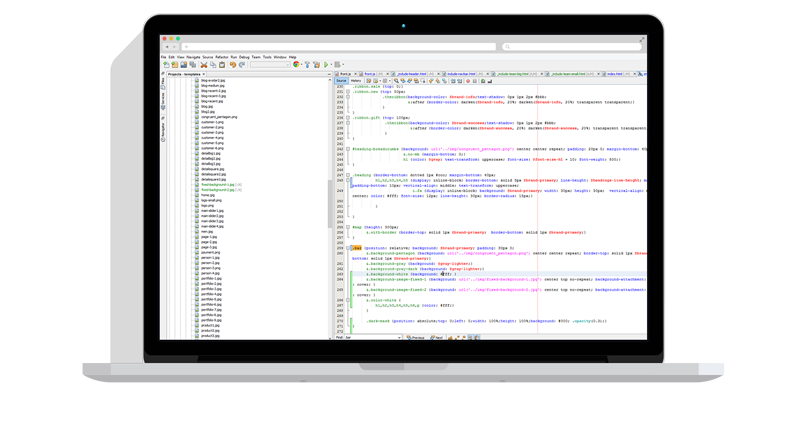Sample scripts are provided as-is with no warranty of fitness for a particular purpose. These scripts are solely intended to demonstrate techniques for accomplishing common tasks. Additional script logic and error-handling may need to be added to achieve the desired results in your specific environment.
http_post_file.s
Note: Make sure you really need to do a POST. If you are simply uploading a file it may be simpler to use the SENDFILE command (which uses the HTTP verb PUT instead of POST).
Note: This process has been simplified as of v3.7. If you are using v3.7 or later, see Sample Script #26.
As of v3.6.0, Robo-FTP supports automating communication via HTTP and HTTPS.
One of the more complicated scenarios to automate is the process of communicating interactively with a web site and uploading data via a web form.
This script provides some functions that greatly simplify this task.
HTTP web forms come in 2 basic varieties:
application/x-www-form-urlencoded
This is the default type of form. It can be submitted using either an HTTP GET or an HTTP POST.
Submit via GET
This type is less common and is not the focus of this sample. Automating this type of form is very easy. You simply need to construct a url of the form:
http://www.myurl.com/subdir/script.asp?field1=value1&field2=value2
This can be accomplished with a simple three-line Robo-FTP script:
FTPLOGON "www.myurl.com" /servertype=HTTP
FTPCD "subdir"
RCVFILE "script.asp?field1=value1&field2=value2" /as "localfilename.html"
This type of form can only be used for submitting ASCII characters.
Submit via POST
This is the most common type of form submission and is also used to submit ASCII characters in field=value pairs as above. The only difference is instead of appending the form data to the url, the data is added to the body of the POST.
The sample script below includes functions for encoding the data properly and submitting the form.
multipart/form-data
This type must be explicitly specified in the <form> tag's enctype attribute like this:
<form action="http://www.myurl.com" method="post" enctype="multipart/form-data">
This type of form submits data via POST as described above, but can also include a file upload. This is the only type of form that can cover the entire ISO10646 character set.
Uploading a file via this type of form is defined in RFC 2388.
This sample script includes functions that simplify the process of encoding a file upload into the body of the form and submitting it.
The fields, values, and URL used in the script below are examples and will need to be replaced with whatever fields, values, and URL the system you are trying to submit to requires.
1 BEGINFUNCTIONS
2 FUNCTION InitPostData file boundary
3 SET %myfile = file
4 SET %myboundary = "--" & boundary
5 SET %contenttype = "multipart/form-data; boundary=" & boundary
6 WRITEFILE file %myboundary
7 ENDFUNCTION
8 FUNCTION AddPostField name value
9 SET %header = 'content-disposition: form-data; name="' & name & '"'
10 WRITEFILE %myfile %header /append
11 WRITEFILE %myfile "" /append
12 WRITEFILE %myfile value /append
13 WRITEFILE %myfile %myboundary /append
14 RETURN
15 ENDFUNCTION
16 FUNCTION AddPostFile fieldName file mimeType
17 SETSUBSTR depth = file "\"
18 SETNUM depth = depth + 1
19 SETEXTRACT base = file "\" depth
20 SET %header = 'content-disposition: form-data; name="' & fieldName & '"; filename="' & base & '"'
21 SET %mimeHeader = 'Content-Type: ' & mimeType
22 SET %headFile = %myfile & ".head"
23 SET %tailFile = %myfile & ".tail"
24 WRITEFILE %myfile %header /append
25 WRITEFILE %myfile %mimeHeader /append
26 WRITEFILE %myfile "Content-Transfer-Encoding: binary" /append
27 WRITEFILE %myfile "" /append
28 RENAME %myfile %headFile
29 WRITEFILE %tailFile %myboundary
30 SET %command = "copy /b " & %headFile & " + " & file & " + " & %tailfile & " " & %myfile
31 DOSCMD %command
32 DELETE %headFile
33 DELETE %tailFile
34 ENDFUNCTION
35 ENDFUNCTIONS
36
37 ;; You should not need to edit anything above this line.
38 ;; Just set the variables below as appropriate and call
39 ;; the above functions as demonstrated below.
40
41 SET %tmpdata = "C:\post.bin"
42 SET %field1 = "field1 value"
43 SET %field2 = "field2 value"
44 SET %filename = "C:\files\files.zip"
45 ; mimetype below should be based on extension (zip)
46 SET %mimetype = "application/zip"
47 ; see http://www.mimetype.org/ or use application/octet-stream
48
49 FTPLOGON "HTTP Site"
50 ; prepare post data for upload
51 InitPostData %tmpdata "lakfiqalwuFieldSeperator48pyq489p"
52 AddPostField "field1" %field1
53 AddPostField "field2" %field2
54 AddPostFile "userfile" %filename %mimetype
55 HTTPPOST "/poster.asp" %tmpdata %postresult /outtype=string /contenttype=%contenttype
56 DELETE %tmpdata
57 FTPLOGOFF


